#hippoglossus hippoglossus
Text
Allow me to introduce you to the Atlantic halibut (Hippoglossus hippoglossus), the world's largest growing flatfish species. They can grow to 2.5 meters in length, and weigh up to 316kg. I cannot comprehend this. I love them.
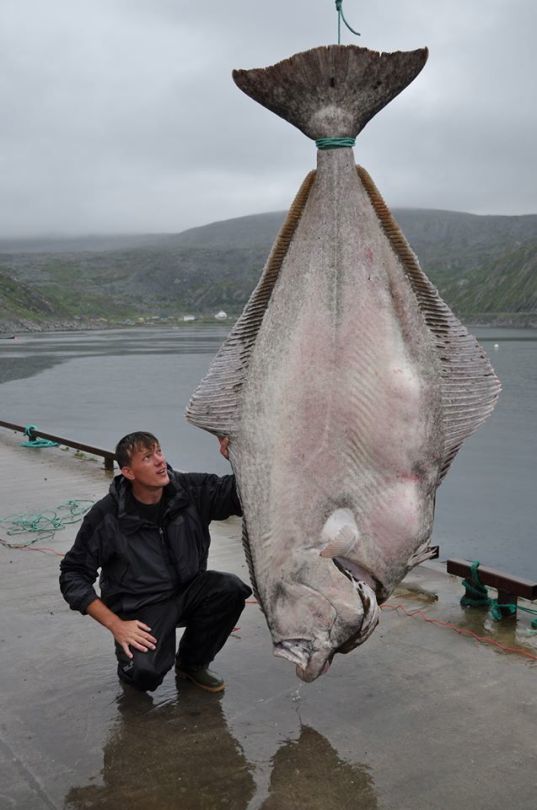


283 notes
·
View notes
Note
I did a project on this species in undergrad so I'm partial to it for sentimental reasons. Can I please request the Atlantic Halibut? (When I went to present said project, I introduced it by its scientific name, Hippoglossus hippoglossus calling it "the fish so nice they named it twice", which caused my professor to facepalm, even though on some level I think he found it funny. The same professor who has a fish emoticon made from various punctuation marks in his official university signature XD)
Best fishes/wishes! Thanks for sharing your art, it's a delight :D

fish 140 - atlantic halibut
65 notes
·
View notes
Text
Animal Crossing Fish Dish Friday - #14
Brought to you by a marine biologist and a bunch of weird flat bois...
CLICK HERE FOR THE AC FISH EXPLAINED MASTERPOST!
Olive Flounder Meuniere

In ACNH: 1. Get Turkey Day Recipes - Franklin will give you this recipe after you've helped him cook all of Turkey Day's meals. Funny that on Turkey Day, the main ingredient is Sea Bass + a random fish from 3 choices (for Northern Hemisphere players) or Squid and Sea Urchin (for Southern Hemisphere). The recipe you get is for Olive Flounder.
2. Cook on the stove with 1 Olive Flounder and 2 Flour.
In Real Life: from France
Species of Choice: It can be any flounder species - the more native to you, the better. Flat fish come in many names and many species, as I'll explain below, but most of them available for people to eat present flaky, white meat that most people associate with a "good fish".
Other Ingredients:
Butter
Parsley
Lemon
White or Corn Flour
Get the recipe. and serve with a hot veggie and bread.
This will be long because of pictures. A long, long time ago, in an article far away, we covered how flatfish, like the Olive Flounder, become to look so ridiculous. I also pointed out and explained the differences between left-eye and right-eye flounders in the article covering the Dab. These things will be important as we move on to our next lesson about flatfish.
With over 800 species, the Order of Pleuronectiformes, the flounders, has a lot of diversity. Even though most* of these fish are flat and have both eyes on one side of the head, they come in some interesting shapes. We'll start with the tame and end with the weirdos.
Flounders - SubOrder Plueronectoidei
The name "flounder" is used for many flatfish that are important to fisheries/seafood. Even still, these are also quite diverse, not just because both right-eyed and left-eyed flatfish are called flounders, but because they also occupy different niches. Some of them have tiny mouths great for eating tiny fish and plankton, and then some are higher-trophic-level predators with huge mouths and teeth!
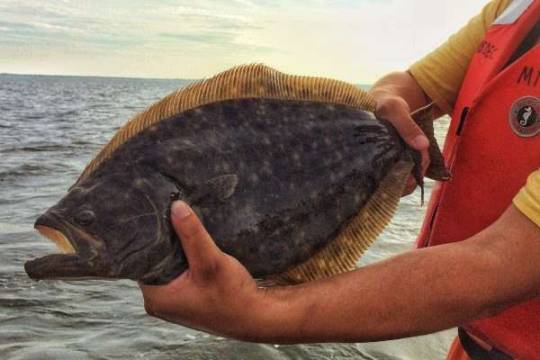

^These two fish are native to my neck of the ocean. Big differences in the mouth, right?
There are also 4 special flounders in this group called "Plaice".
Halibut - Genera Hippoglossus & Reinhardtius
The term halibut is reserved for the largest flatfish species, of which there are 3 - the Atlantic Halibut and Pacific Halibut in Genus Hippoglossus, and the Greenland Halibut in Genus Reinhardtius. They are absolutely massive, growing to 9 feet (3m) for some individuals. When you eat halibut, you're getting a very tiny portion of that fish. But size isn't the only way to tell them apart from other flatfish - they also have tail fins with longer, sharper points for fast swimming, and all 3 are "right-eyed" flatfish.

By Jlikes2Fish - Own work, Public Domain
Turbots - Family Scophthalmidae
Okay, now we're getting away from special flounders, and into new Families. The turbots are also called windowpanes or brill, but the biggest difference between them and other flatfish is their more rhombus or stout shape, rather than the elongated oval-shape of most other flatfish. Their shape is not really a scientific trait, but we're going for "first glance" here. These are also eaten widely.

By I, Luc Viatour, CC BY-SA 3.0
Soles - Family Soleidae & Achiridae
The fish in Soleidae are the true soles, with fish in Achiridae known as the American Soles, once classified within Soleidae. Either way, soles make up about 180 species and here's where we start to get weird. They often have more tear-drop-shaped bodies (but some can be really kind of square or round like a turbot) and very tiny or non-existent pectoral fins. These are also commonly eaten and they "right-eyed". They also have these weird mouths...just look at the picture...

By © Hans Hillewaert, CC BY-SA 4.0
It's all, like, lip-less? And beak-shaped? They have jaws - of course - but whenever I've had to handle our tiny, native sole here on Long Island, I'm always a bit surprised at it. But yeah, that's a thing they have in common with the last group.
Tonguefish - Family Cynglossidae
Here we are - the last group and the weirdest of the bunch. I think these take the flatfish body plan to the extreme and they have a number of traits that set them apart from other flatfish. These guys also have that beak or hook-shape to the upper jaw, but it's flabby, so it's weird. It's like its body is slowly trying to turn the mouth with the eyes (who knows...maybe in millions of years, it will be!) These guys are "left-eyed" and have no pectoral fins at all. They're just...really weird.

It doesn't even look like a fish anymore. I hope ACPC makes one someday.
And there you have it - so many flat bois!
#animal crossing#animal crossing pocket camp#flounder#olive flounder meuniere#turbot#halibut#tonguefish#sole#flatfish#fish#cooking#marine biology#science in video games#maybe not as I went on a tangent#oh well#animal crossing fish explained
18 notes
·
View notes
Text
Fwd: Graduate position: Seattle.HalibutEvoDevo
Begin forwarded message:
> From: [email protected]
> Subject: Graduate position: Seattle.HalibutEvoDevo
> Date: 11 February 2024 at 05:26:51 GMT
> To: [email protected]
>
>
>
> Graduate (MS) position: Development of an epigenetic clock for aging
> Pacific halibut (Hippoglossus stenolepis)
>
> A 2-year MS level graduate student project is available in the Fall
> of 2024 or earlier for a student interested in the development of
> genome-wide DNA methylation-based methods for aging Pacific halibut as
> an alternative to current traditional aging methods. The MS student
> will be jointly supervised by faculty at Alaska Pacific University
> in Anchorage, AK, and biologists and quantitative scientists at the
> International Pacific Halibut Commission in Seattle, WA and the Alaska
> Fisheries Science Center in Juneau, AK, to develop and validate an
> epigenetic clock and high-throughput genomic methods for age estimation
> that will inform the Pacific halibut stock assessment. The specific
> objectives of this grant-funded project involve: 1) developing an
> age estimation method based on the generation of a high-resolution DNA
> methylation map for Pacific halibut tissue (fin clips) by drawing on the
> high-quality genome assembly (Jasonowicz et al., Mol. Ecol. Res. 2022;
> https://ift.tt/h6iOvk8) and extensive transcriptomic
> data available for Pacific halibut; 2) developing predictive age models
> comparing age determinations by traditional (i.e. otolith annuli reading)
> and genome-wide DNA methylation-based methods; and, 3) developing error
> estimation methods and conducting sensitivity analyses.
>
> Ideal candidates will have a BSc in Fisheries, Marine Biology,
> Ecology or related field and programming experience in one or more
> modern scripting languages (e.g. R, Python, etc.). Knowledge of using
> Command Line Interfaces (CLI) such as Linux, Unix and or Bash shell is
> strongly desired. Experience in analyzing genomic data is preferred but
> not required.
>
> To apply, please send 1) a cover letter summarizing research interests
> and experience, 2) a current CV containing a list of publications (if
> applicable), 3) a writing sample, and 4) the names and contact information
> for three professional references to Dr. Nathan Wolf at Alaska Pacific
> University, Anchorage, AK ([email protected]). Review of candidates
> will begin immediately, but the position will remain open until a suitable
> candidate is found.
>
> Josep Planas, Ph.D.
> Biological & Ecosystem Science Branch Manager
> 2320 West Commodore Way, Suite 300
> Seattle, WA 98199 USA
> +1-206-552-7687
> [email protected]
> www.iphc.int
>
>
>
> [email protected]
>
> (to subscribe/unsubscribe the EvolDir send mail to
> [email protected]
0 notes
Link
0 notes
Text
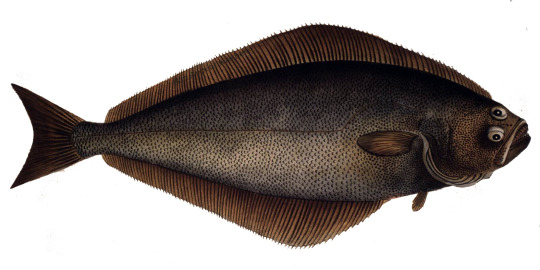
Hippoglossus Hippoglossus (Atlantische Heilbutt).
0 notes
Text
A rare type of kindhearted flounder has been discovered off the coast of the Gulf of Mexico.
Researchers from the University of Texas at Austin and the Florida Institute of Technology were surveying the area when they stumbled upon the rare species of flounder. Named "Hippoglossus Kindus" by the researchers, this type of fish has a unique behavior that sets it apart from other flounder.
Unlike other fish of its kind, this species of flounder is known for its kindness towards other marine creatures. During their study, the researchers observed the flounder protecting small fish from predators and even providing food for its peers.
This behavior is extremely rare among fish species. In addition, it is the first reported instance of flounder displaying such altruistic behavior.
The discovery of this species of kindhearted flounder has excited scientists around the world. This discovery could lead to further research into the behavior of fish and their interactions with other marine species.
For now, the researchers are continuing to study the flounder in hopes of uncovering more information about its behavior. They believe that understanding the flounder's behavior could lead to further insights into the complex social dynamics of the ocean.
0 notes
Photo
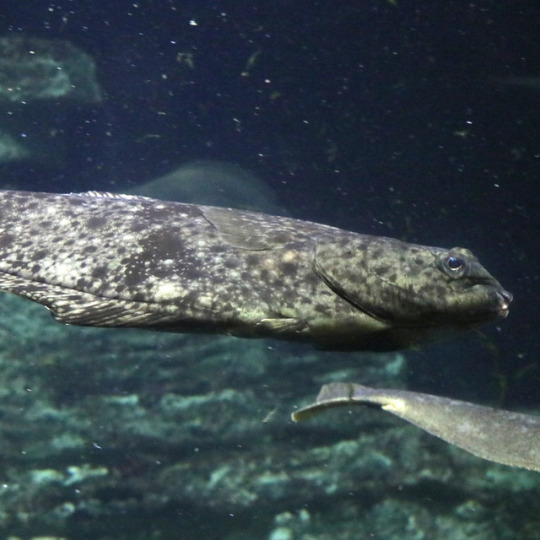
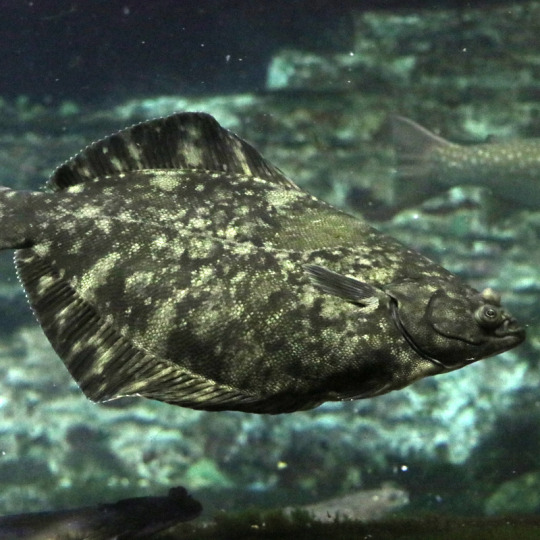
オホーツク海・ベーリング海水槽はドーナツ型で、これでもかというほど寒いところの魚が集まってて圧巻でした。小さい水槽なら底にじっとしていそうなカレイ類とかオオカミウオがずっとぐるぐるしてる。すごい光景だった。
これ両方オヒョウで合ってます?ぶあつっ!と思って撮ったけど…
@おたる水族館
23 notes
·
View notes
Photo

Pacific Halibut (Hippoglossus stenolepis)
35 notes
·
View notes
Photo

When Chinook salmon is off the menu, other prey will do for endangered orcas
Elizabeth Claire Alberts - March 3, 2021
- A new study has found that endangered southern resident killer whales mainly consume endangered Chinook salmon, but will broaden their diet when this species isn’t available.
- The researchers obtained data through prey and fecal waste collected from resident killer whales over a 13-year period.
- Efforts to reinstate Chinook salmon populations through hatchery efforts can play an important role in supporting resident killer whale populations, although these programs need to be carefully managed to ensure that stocks are diverse, the study suggests.
For nearly 20 years, Robin Baird has been following killer whales, trying to figure out what they eat. At first, he would look to see what was in their mouths as the whales feasted on fish near the surface. But then he and his colleague, Brad Hanson, started looking for more subtle clues in their flukeprints — the orbs of placid water that appear on the surface when a killer whale dives into the sea, or flicks its tail underwater. In or around these flukeprints, you can find fish scales and fecal matter, which provide a treasure trove of information.
“If they’re catching things near the surface of the water, it’s much [easier] to be able to document than if they’re capturing things at depth,” Baird, a research biologist at Cascadia Research Collective, told Mongabay in an interview. “What the fecal samples do is they show … a higher proportion of things like lingcod and halibut and sole flounder [that] are caught deeper in the water column and less likely to be brought up to the surface.”
A new study published March 3 in PLOS ONE provides a comprehensive look at the diet of the endangered southern resident killer whales (Orcinus orca), or orcas, that inhabit the Pacific coast between the U.S. and Canada, as well as the inland waterways of Washington state, during the spring, summer and fall months.
By analyzing 150 prey and fecal samples collected between 2004 and 2017, the researchers found that endangered Chinook salmon (Oncorhynchus tshawytscha) was always the prey of choice, constituting nearly 100% of their diet in the spring, and about 70% to 80% of their diet in mid-winter and early spring. But when Chinook salmon was scarce, particularly in the fall when orcas only ate this prey about 50% of the time, they had to supplement their diet with other fish such as chum salmon (Oncorhynchus keta), coho salmon (Oncorhynchus kisutch), steelhead trout (Oncorhynchus mykiss), and also non-salmonid species like lingcod (Ophiodon elongatus) and Pacific halibut (Hippoglossus stenolepis).
“Whether or not you interpret that as a good thing, in the sense that, ‘Okay if there aren’t enough Chinook around, they’re going to be able to get by other types of prey,’ or if you view it as an indicator of, ‘Well, we need to do more to make Chinook available to them, year round,’ I think it is a bit up in the air,” said Baird, who was a co-author of the study.
Chinook salmon is one of the fattiest, calorie-rich prey foods available to resident killer whales, and the consumption of these fish has long been linked to the survivability of orcas. Yet many Chinook salmon populations are threatened with extinction due to threats like overfishing and the construction of dams, which obstruct their ability to spawn.
For instance, 12 of the 13 Chinook salmon populations in the Fraser River, a waterway that snakes through British Columbia, are considered to be at risk because of habitat destruction, overfishing, and also warming waters due to climate change. But in the lower Columbia River between Oregon and Washington, Chinook salmon populations have moderately recovered thanks to spawning and reintroduction efforts. However, these populations are still considered “threatened.”
“If returns to the Fraser River are in trouble, and Columbia River returns are strong, then prey availability to the whales potentially balances out as the whales have evolved to move rapidly throughout their range,” Hanson, lead author of the study and a wildlife biologist at NOAA, said in a statement. “But if most of the stocks throughout their range are reduced then this could spell trouble for the whales.”
The southern resident killer whale population has been declining over the years; right now, it’s estimated there are only 74 individuals in three pods. By contrast, the northern resident killer whales have been steadily increasing, and have a current population of about 300 individuals. This discrepancy could be due to the northern resident killer whales having more access to mature Chinook salmon, the study suggests.
Hatcheries for Chinook salmon provide an important source of prey for southern resident killer whales, according to the study. But these programs should be carefully managed so that the prey is available at all times of the year, especially when there are shortages in the orcas’ diet, the researchers say.
“We don’t need more cookie-cutter fish that all come back during the time when Chinook are most abundant; we need to diversify and increase availability at other times of the year,” Baird said in a statement.
Emmalai Page, a marine campaigner at the Canadian NGO Pacific Wild, who was not involved in this study, said the research confirmed what conservationists already suspected about orcas’ diets: that they supplemented with other fish when Chinook salmon wasn’t available. However, she said it was interesting to see the seasonal changes in their diet.
“We have known that SRKWs [southern resident killer whales] were most likely not getting enough Chinook salmon, so it is reassuring to know that there is supplementation of other species occurring,” Page told Mongabay in an email.
She also said this study, as well as others like it, can help inform conservation efforts to preserve salmon populations, including Chinook salmon stocks, for resident killer whales.
“It can often be difficult to align the messaging of conservation organizations, academia and government,” Page said. “Having a scientific study concluding what many have observed for years is validating in itself. Going forward, more collaboration is needed between conservation organizations, First Nations, management organizations and academia. No single group has all the resources to make all the changes necessary.”
61 notes
·
View notes
Text
youtube
Video from my birthday trip down to the Oregon Coast Aquarium. I was fascinated by the halibut flats tank, but I know that sharks are what attracts viewers, so that's what I got. My time in halibut flats was mine alone, and I made the most of it. Would have been nice to go with friends, or even a single friend, but no one is free on any given Thursday; and also, I don't have any friends.
The beauty of the flatfish was offset by the great sadness I felt that I could not share in that beauty with close friends. I live my life alone. I will likely die alone. But along the way, hopefully I am able to capture the wonder I find in flatfish for all to see. That must be my legacy. Without it, I will blow away like dust in the annals of human history.
Witness me, and my passion.
#pleuronectidae#flatfish#pacific halibut#triakis semifasciata#leopard shark#squalus suckleyi#pacific spiny dogfish#notorhynchus cepedianus#broadnose sevengill shark#oregon coast aquarium#hippoglossus stenolepis#tuna#fish#Youtube
3 notes
·
View notes
Text
Pacific Halibut Steaks - 500g
Pacific Halibut Steaks – 500g
Pacific Halibut Steaks With Fresh Greens
Pacific Halibut Steaks, are a common name principally applied to the two flat fish in the genus Hippoglossus from the family of right-eye flounders. Perfect for shallow frying or grilling on the bbq.
Dressing.1 tablespoon balsamic vinegar.1 tablespoon fresh orange juice.1 tsp Dijon mustard.1/8 tsp newly ground black pepper.2 tbsps olive oil.
Marinade…

View On WordPress
0 notes
Text
Infectious pancreatic necrosis virus, serotype N1, isolated from Norwegian halibut (Hippoglossus hippoglossus)
http://dlvr.it/PtJQcj
0 notes
Photo
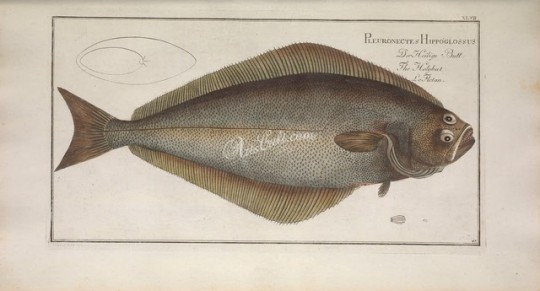
Holybut, pleuronectes hippoglossus - high resolution image from old book.
0 notes
Text
Big Fish in Big Trouble in Europe
A new study by an international team of scientists, published in Nature Ecology & Evolution , warns that many large fish species, including many of the sharks and rays of Europe, are threatened with extinction. Confirming the findings of previous studies, the scientists highlight regional differences in fish stock status in Europe and point to overfishing in the Mediterranean.Marine fish play an important role in marine ecosystems, but are also a major food source for marine animals and humans. The new study published in Nature Ecology & Evolution found that the bigger the fish, the more likely it is to be threatened with extinction. This is because they are more susceptible to threats such as overfishing because they grow slower, take longer to mature, have fewer offspring and are in higher demand for food consumption and recreational fishing.The research team studied the status of commercial fish stocks all around Europe to assess the extinction risk of fish. The JRC contributed to the study by analysing stock assessment data of commercial fish stocks in the Mediterranean Sea. The Mediterranean stock assessment data were produced by the Scientific, Technical and Economic Committee for Fisheries (STECF), a Commission expert group for which the JRC acts as the secretariat and provides expertise in stock assessments.
Geographical discrepancies: Mediterranean worst off
The scientists found significant geographical discrepancies: a much higher fraction of the fish stocks were overexploited and depleted in biomass in the Mediterranean, compared with the northeast Atlantic. None of the 39 assessed Mediterranean fish stocks examined were classed as sustainable. Hake ( Merluccius merluccius ) is of particular concern: of the 12 examined hake stocks in the Mediterranean, 9 have exploitation rates that are over five times higher than the rate in line with maximum sustainable yield.Scientists say that this is linked to how the areas are managed, how fishing quotas are set and how fish stocks are monitored. They also remind that the Mediterranean is a semi-enclosed sea with a much longer history of human impacts compared with the Atlantic. At present, the Mediterranean is heavily impacted, in addition to fishing, by multiple stress factors ranging from temperature increase and acidification to habitat modification and pollution in the coastal areas.
Larger fish species threatened with extinction
The study stresses that while most of Europe's commercial fish stocks are not yet threatened with extinction, most of the larger fish species are, particularly sharks and rays. In addition to these, the large fish species that are threatened include six species of sturgeon, the northern wolffish (Anarhichas denticulatus ), blue ling ( Molva dipterygia ), the dusky grouper ( Epinephelus marginatus ), the Atlantic halibut ( Hippoglossus hippoglossus ) and (wild) Atlantic salmon ( Salmo salar )."This study highlights two major issues for Europe's fish: the threats to large fish species, including sharks and rays, and the severe overfishing in the Mediterranean, which is in contrast to the improving picture in the northeast Atlantic. In the northeast Atlantic, there are catch limits in place, coupled with rigorous fisheries monitoring and enforcement schemes. In the Mediterranean there is a larger number of fishing vessels using multiple gears, there are largely no catch limits, and management is carried out mainly through some spatial and temporal restrictions to fishing, which are often poorly enforced. The Commission recently launched the MEDFISH4EVER strategy to improve the state of Mediterranean fish stocks, which is obviously a step to the right direction," said JRC researcher Paris Vasilakopoulos, co-author of the study, who contributed to the analysis of the Mediterranean fish stock assessment data.Greater efforts to conserve our large fish species are essential as the loss of these large, ecologically important species could have consequences that cascade to other levels which include important commercial species, particularly in the overfished southern European stocks.
MedFish4Ever
In recent years, the European Commission has taken a number of initiatives to redress the balance between harvesting activities and productivity of the stocks. Modern EU rules against overfishing apply domestically, and the Commission works closely with non-EU Mediterranean countries through international channels like the General Fisheries Commission for the Mediterranean, the International Commission for the Conservation of Atlantic Tunas and the Barcelona Convention. In parallel, a number of conservation actions are now being developed through regions-specific initiatives for the Adriatic-Ionian and for the western Mediterranean. A positive sign also comes from the recent Declaration on the sustainability of Mediterranean fisheries signed by 15 fisheries ministers of riparian countries (MedFish4Ever). The countries in question undertake to improve fisheries governance in the region by upgrading data collection and scientific evaluation, establishing an ecosystem-based fisheries management framework and developing a culture of compliance to combat illegal, unreported and unregulated fishing. This new 10-year long partnership, which could still extend to even more countries, is set to bring us closer to our goal of a healthy and productive Mediterranean Sea.
source: https://www.sciencedaily.com/releases/2017/06/170601125111.htm
Translation:
Ikan Besar Dalam Masalah Besar di Eropa
Sebuah studi baru oleh tim ilmuwan internasional, yang diterbitkan dalam Nature Ecology & Evolution, memperingatkan bahwa banyak spesies ikan besar, termasuk banyak hiu dan sinar Eropa, terancam punah. Mengkonfirmasi temuan penelitian sebelumnya, para ilmuwan menyoroti perbedaan regional dalam status stok ikan di Eropa dan menunjukkan penangkapan berlebih di Laut Tengah.Ikan laut memainkan peran penting dalam ekosistem laut, namun juga merupakan sumber makanan utama bagi hewan laut dan manusia. Studi baru yang diterbitkan di Nature Ecology & Evolution menemukan bahwa semakin besar ikan, semakin besar kemungkinan untuk diancam punah. Hal ini karena mereka lebih rentan terhadap ancaman seperti penangkapan berlebih karena tumbuh lebih lambat, membutuhkan waktu lebih lama untuk matang, memiliki lebih sedikit keturunan dan mendapat permintaan makanan dan perikanan rekreasi yang lebih tinggi.Tim peneliti mempelajari status stok ikan komersial di seluruh Eropa untuk menilai kepunahan risiko ikan. JRC memberikan kontribusi pada penelitian ini dengan menganalisis data penilaian stok ikan komersial di Laut Mediterania. Data penilaian saham Mediterranean diproduksi oleh Komite Ilmiah, Teknis dan Ekonomi untuk Perikanan (STECF), sebuah kelompok ahli Komisi dimana JRC bertindak sebagai sekretariat dan memberikan keahlian dalam penilaian saham.
Perbedaan geografis: Mediterania terburuk
Para ilmuwan menemukan perbedaan geografis yang signifikan: sebagian besar stok ikan lebih banyak dieksploitasi dan menghabiskan biomassa di Mediterania, dibandingkan dengan Atlantik timur laut. Tak satu pun dari 39 ikan yang dinilai diberi ikan Mediterania yang dinilai digolongkan berkelanjutan. Hake (Merluccius merluccius) menjadi perhatian khusus: dari 12 stok hake yang diperiksa di Mediterania, 9 memiliki tingkat eksploitasi yang melebihi lima kali lebih tinggi dari tingkat yang sesuai dengan hasil lestari maksimum.Para ilmuwan mengatakan bahwa ini terkait dengan bagaimana wilayah tersebut dikelola, bagaimana penentuan harga ikan paus dan bagaimana stok ikan dipantau. Mereka juga mengingatkan bahwa Mediterania adalah laut semi tertutup dengan sejarah dampak manusia yang jauh lebih panjang dibandingkan dengan Atlantik. Saat ini, Mediterania sangat terkena dampak, selain memancing, dengan banyak faktor stres mulai dari kenaikan suhu dan pengasaman hingga modifikasi habitat dan polusi di daerah pesisir.
Spesies ikan yang lebih besar terancam punah
Studi tersebut menekankan bahwa sementara sebagian besar stok ikan komersial Eropa belum terancam punah, sebagian besar spesies ikan yang lebih besar, terutama hiu dan rami. Selain itu, spesies ikan besar yang terancam meliputi enam spesies sturgeon, wolffish utara (Anarhichas denticulatus), ling biru (Molva dipterygia), kerapu kerdil (Epinephelus marginatus), halibut Atlantik (Hippoglossus hippoglossus) dan ( Liar) salmon Atlantik (Salmo salar)."Studi ini menyoroti dua isu utama untuk ikan Eropa: ancaman terhadap spesies ikan besar, termasuk hiu dan sinar, dan penangkapan ikan yang berlebihan di Laut Tengah, yang berbeda dengan gambaran yang membaik di Atlantik timur laut. Di Atlantik timur laut, di sana Adalah menangkap batas di tempat, ditambah dengan skema pemantauan dan penegakan perikanan yang ketat. Di Laut Tengah ada sejumlah besar kapal penangkap ikan yang menggunakan beberapa roda gigi, sebagian besar tidak ada batas penangkapan, dan pengelolaan dilakukan terutama melalui beberapa batasan spasial dan temporal untuk "Komisi baru-baru ini meluncurkan strategi MEDFISH4EVER untuk memperbaiki keadaan stok ikan Mediterania, yang jelas merupakan langkah ke arah yang benar," kata peneliti JRC, Paris Vasilakopoulos, rekan penulis studi tersebut, yang memberikan kontribusi Untuk analisis data penilaian stok ikan Mediterania.Upaya yang lebih besar untuk melestarikan spesies ikan besar kita sangat penting karena hilangnya spesies-spesies penting dan ekologis ini dapat memiliki konsekuensi yang beriringan ke tingkat lain yang mencakup spesies komersial penting, terutama di saham-saham Eropa selatan yang melimpah.
MedFish4Ever
Dalam beberapa tahun terakhir, Komisi Eropa telah mengambil sejumlah inisiatif untuk memperbaiki keseimbangan antara kegiatan pemanenan dan produktivitas saham. Aturan UE modern melawan penangkapan berlebih berlaku di dalam negeri, dan Komisi bekerja sama dengan negara-negara Mediterania non-Uni Eropa melalui jalur internasional seperti Komisi Perikanan Umum untuk Laut Tengah, Komisi Internasional untuk Konservasi Tunas Atlantik dan Konvensi Barcelona. Secara paralel, sejumlah tindakan konservasi sekarang dikembangkan melalui inisiatif spesifik daerah untuk Adriatik-Ionia dan untuk Mediterania barat. Tanda positif juga berasal dari Deklarasi terbaru tentang keberlanjutan perikanan Mediterania yang ditandatangani oleh 15 menteri perikanan di negara-negara riparian (MedFish4Ever). Negara-negara yang bersangkutan berusaha memperbaiki tata kelola perikanan di wilayah ini dengan meningkatkan pengumpulan data dan evaluasi ilmiah, membangun kerangka pengelolaan perikanan berbasis ekosistem dan mengembangkan budaya kepatuhan untuk memerangi penangkapan ikan yang tidak sah, tidak dilaporkan dan tidak diatur. Kemitraan jangka panjang 10 tahun yang baru ini, yang masih bisa menjangkau lebih banyak lagi negara, ditetapkan untuk membawa kita lebih dekat ke tujuan kita di Laut Mediterania yang sehat dan produktif.
Proof Reader:
Ikan Besar Dalam Masalah Besar di Eropa
Sebuah studi baru oleh tim ilmuwan internasional, yang diterbitkan dalam Nature Ecology & Evolution, memperingatkan bahwa banyak spesies ikan besar, termasuk banyak hiu dan sinar Eropa, terancam punah. Mengkonfirmasi temuan penelitian sebelumnya, para ilmuwan menyoroti perbedaan regional dalam status stok ikan di Eropa dan menunjukkan penangkapan berlebih di Laut Tengah.Ikan laut memainkan peran penting dalam ekosistem laut, namun juga merupakan sumber makanan utama bagi hewan laut dan manusia. Studi baru yang diterbitkan di Nature Ecology & Evolution menemukan bahwa semakin besar ikan, semakin besar kemungkinan untuk diancam punah. Hal ini karena mereka lebih rentan terhadap ancaman seperti penangkapan berlebih karena tumbuh lebih lambat, membutuhkan waktu lebih lama untuk matang, memiliki lebih sedikit keturunan dan mendapat permintaan makanan dan perikanan rekreasi yang lebih tinggi.Tim peneliti mempelajari status stok ikan komersial di seluruh Eropa untuk menilai kepunahan risiko ikan. JRC memberikan kontribusi pada penelitian ini dengan menganalisis data penilaian stok ikan komersial di Laut Mediterania. Data penilaian saham Mediterranean diproduksi oleh Komite Ilmiah, Teknis dan Ekonomi untuk Perikanan (STECF), sebuah kelompok ahli Komisi dimana JRC bertindak sebagai sekretariat dan memberikan keahlian dalam penilaian saham.
Perbedaan geografis: Mediterania terburuk
Para ilmuwan menemukan perbedaan geografis yang signifikan: sebagian besar stok ikan lebih banyak dieksploitasi dan menghabiskan biomassa di Mediterania, dibandingkan dengan Atlantik timur laut. Tak satu pun dari 39 ikan yang dinilai diberi ikan Mediterania yang dinilai digolongkan berkelanjutan. Hake (Merluccius merluccius) menjadi perhatian khusus: dari 12 stok hake yang diperiksa di Mediterania, 9 memiliki tingkat eksploitasi yang melebihi lima kali lebih tinggi dari tingkat yang sesuai dengan hasil lestari maksimum.Para ilmuwan mengatakan bahwa ini terkait dengan bagaimana wilayah tersebut dikelola, bagaimana penentuan harga ikan paus dan bagaimana stok ikan dipantau. Mereka juga mengingatkan bahwa Mediterania adalah laut semi tertutup dengan sejarah dampak manusia yang jauh lebih panjang dibandingkan dengan Atlantik. Saat ini, Mediterania sangat terkena dampak, selain memancing, dengan banyak faktor stres mulai dari kenaikan suhu dan pengasaman hingga modifikasi habitat dan polusi di daerah pesisir.
Spesies ikan yang lebih besar terancam punah
Studi tersebut menekankan bahwa sementara sebagian besar stok ikan komersial Eropa belum terancam punah, sebagian besar spesies ikan yang lebih besar, terutama hiu dan rami. Selain itu, spesies ikan besar yang terancam meliputi enam spesies sturgeon, wolffish utara (Anarhichas denticulatus), ling biru (Molva dipterygia), kerapu kerdil (Epinephelus marginatus), halibut Atlantik (Hippoglossus hippoglossus) dan ( Liar) salmon Atlantik (Salmo salar)."Studi ini menyoroti dua isu utama untuk ikan Eropa: ancaman terhadap spesies ikan besar, termasuk hiu dan sinar, dan penangkapan ikan yang berlebihan di Laut Tengah, yang berbeda dengan gambaran yang membaik di Atlantik timur laut. Di Atlantik timur laut, di sana Adalah menangkap batas di tempat, ditambah dengan skema pemantauan dan penegakan perikanan yang ketat. Di Laut Tengah ada sejumlah besar kapal penangkap ikan yang menggunakan beberapa roda gigi, sebagian besar tidak ada batas penangkapan, dan pengelolaan dilakukan terutama melalui beberapa batasan spasial dan temporal untuk "Komisi baru-baru ini meluncurkan strategi MEDFISH4EVER untuk memperbaiki keadaan stok ikan Mediterania, yang jelas merupakan langkah ke arah yang benar," kata peneliti JRC, Paris Vasilakopoulos, rekan penulis studi tersebut, yang memberikan kontribusi Untuk analisis data penilaian stok ikan Mediterania.Upaya yang lebih besar untuk melestarikan spesies ikan besar kita sangat penting karena hilangnya spesies-spesies penting dan ekologis ini dapat memiliki konsekuensi yang beriringan ke tingkat lain yang mencakup spesies komersial penting, terutama di saham-saham Eropa selatan yang melimpah.
MedFish4Ever
Dalam beberapa tahun terakhir, Komisi Eropa telah mengambil sejumlah inisiatif untuk memperbaiki keseimbangan antara kegiatan pemanenan dan produktivitas saham. Aturan UE modern melawan penangkapan berlebih berlaku di dalam negeri, dan Komisi bekerja sama dengan negara-negara Mediterania non-Uni Eropa melalui jalur internasional seperti Komisi Perikanan Umum untuk Laut Tengah, Komisi Internasional untuk Konservasi Tunas Atlantik dan Konvensi Barcelona. Secara paralel, sejumlah tindakan konservasi sekarang dikembangkan melalui inisiatif spesifik daerah untuk Adriatik-Ionia dan untuk Mediterania barat. Tanda positif juga berasal dari Deklarasi terbaru tentang keberlanjutan perikanan Mediterania yang ditandatangani oleh 15 menteri perikanan di negara-negara riparian (MedFish4Ever). Negara-negara yang bersangkutan berusaha memperbaiki tata kelola perikanan di wilayah ini dengan meningkatkan pengumpulan data dan evaluasi ilmiah, membangun kerangka pengelolaan perikanan berbasis ekosistem dan mengembangkan budaya kepatuhan untuk memerangi penangkapan ikan yang tidak sah, tidak dilaporkan dan tidak diatur. Kemitraan jangka panjang 10 tahun yang baru ini, yang masih bisa menjangkau lebih banyak lagi negara, ditetapkan untuk membawa kita lebih dekat ke tujuan kita di Laut Mediterania yang sehat dan produktif.
1 note
·
View note
Text
Mortality of halibut (Hippoglossus hippoglossus) challenged with infectious pancreatic necrosis virus (IPNV)
http://dlvr.it/PscDKZ
0 notes